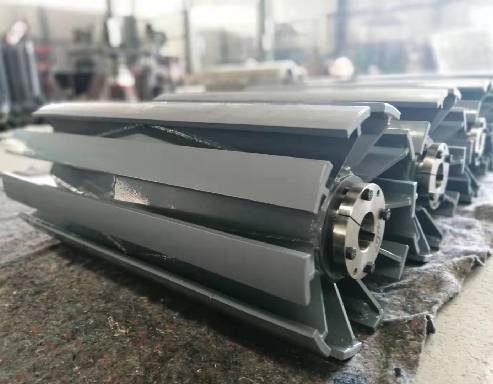 Afrikaans
Afrikaans  Albanian
Albanian  Amharic
Amharic  Arabic
Arabic  Armenian
Armenian  Azerbaijani
Azerbaijani  Basque
Basque  Belarusian
Belarusian  Bengali
Bengali  Bosnian
Bosnian  Bulgarian
Bulgarian  Catalan
Catalan  Cebuano
Cebuano  Corsican
Corsican  Croatian
Croatian  Czech
Czech  Danish
Danish  Dutch
Dutch  English
English  Esperanto
Esperanto  Estonian
Estonian  Finnish
Finnish  French
French  Frisian
Frisian  Galician
Galician  Georgian
Georgian  German
German  Greek
Greek  Gujarati
Gujarati  Haitian Creole
Haitian Creole  hausa
hausa  hawaiian
hawaiian  Hebrew
Hebrew  Hindi
Hindi  Miao
Miao  Hungarian
Hungarian  Icelandic
Icelandic  igbo
igbo  Indonesian
Indonesian  irish
irish  Italian
Italian  Japanese
Japanese  Javanese
Javanese  Kannada
Kannada  kazakh
kazakh  Khmer
Khmer  Rwandese
Rwandese  Korean
Korean  Kurdish
Kurdish  Kyrgyz
Kyrgyz  Lao
Lao  Latin
Latin  Latvian
Latvian  Lithuanian
Lithuanian  Luxembourgish
Luxembourgish  Macedonian
Macedonian  Malgashi
Malgashi  Malay
Malay  Malayalam
Malayalam  Maltese
Maltese  Maori
Maori  Marathi
Marathi  Mongolian
Mongolian  Myanmar
Myanmar  Nepali
Nepali  Norwegian
Norwegian  Norwegian
Norwegian  Occitan
Occitan  Pashto
Pashto  Persian
Persian  Polish
Polish  Portuguese
Portuguese  Punjabi
Punjabi  Romanian
Romanian  Russian
Russian  Samoan
Samoan  Scottish Gaelic
Scottish Gaelic  Serbian
Serbian  Sesotho
Sesotho  Shona
Shona  Sindhi
Sindhi  Sinhala
Sinhala  Slovak
Slovak  Slovenian
Slovenian  Somali
Somali  Spanish
Spanish  Sundanese
Sundanese  Swahili
Swahili  Swedish
Swedish  Tagalog
Tagalog  Tajik
Tajik  Tamil
Tamil  Tatar
Tatar  Telugu
Telugu  Thai
Thai  Turkish
Turkish  Turkmen
Turkmen  Ukrainian
Ukrainian  Urdu
Urdu  Uighur
Uighur  Uzbek
Uzbek  Vietnamese
Vietnamese  Welsh
Welsh  Bantu
Bantu  Yiddish
Yiddish  Yoruba
Yoruba  Zulu
Zulu Enhanced Traction Solutions for Conveyor Belt Pulley Lagging Systems
The Importance of Conveyor Belt Pulley Lagging
Conveyor belt systems are fundamental components in many industrial settings, allowing for the efficient and continuous transport of materials. A critical element within these systems is the pulley, which plays a significant role in ensuring the effective operation of the conveyor belt. One of the best practices to enhance the performance and longevity of conveyor systems is the application of pulley lagging. This article explores what pulley lagging is, its benefits, types of materials used, and its impact on the overall efficiency of conveyor systems.
What is Pulley Lagging?
Pulley lagging refers to the application of a protective layer on the surface of conveyor pulleys. This layer is typically made from materials like rubber, ceramic, or other composite materials. The primary purpose of lagging is to improve the friction between the pulley and the conveyor belt, thus enhancing the overall grip and reducing slippage. Furthermore, lagging protects the pulley from wear and environmental factors, such as moisture and chemical exposure, increasing its lifespan significantly.
Benefits of Pulley Lagging
1. Increased Traction One of the primary benefits of pulley lagging is to enhance the grip between the conveyor belt and the pulley. This improved traction prevents slippage, which can otherwise lead to material spillage, operational downtime, and increased maintenance costs. With the right lagging material, the conveyor system can handle heavier loads more effectively.
2. Reduced Wear and Tear Pulleys without lagging are susceptible to significant wear from continuous contact with the conveyor belt. By applying lagging, the pulley’s surface is shielded from the abrasion caused by friction over time. This protective layer not only extends the lifespan of the pulley but also reduces the frequency of necessary maintenance.
3. Improved Safety Slippage on pulleys can lead to unpredictable system failures, posing risks to both equipment and personnel. Pulley lagging mitigates these risks by ensuring a secure grip, thereby promoting a safer working environment.
4. Enhanced Performance in Wet Conditions Conveyor systems often operate in environments where moisture or spills are prevalent. Certain lagging materials are designed to perform efficiently under these conditions, preventing slippage and maintaining consistent operational flow.
conveyor belt pulley lagging

5. Noise Reduction With the right type of lagging, the noise produced by the conveyor system can be significantly reduced. Certain materials are engineered to absorb vibrations and dampen sounds, creating a quieter operating environment which is beneficial for both workers and machine longevity.
Types of Lagging Materials
1. Rubber Lagging One of the most common types of lagging, rubber offers excellent resistance to wear, is easy to install, and provides good friction. Rubber lagging is available in various hardness levels, allowing for selection based on the specific needs of the application.
2. Ceramic Lagging For high-abrasion applications, ceramic lagging is often used. It incorporates ceramic tiles which provide superior resistance to wear and increase the friction coefficient, making them ideal for challenging operational environments.
3. Polyurethane Lagging This type of lagging is known for its flexibility and resilience. Polyurethane lagging is used in applications where a higher degree of adaptability is required, particularly in environments with fluctuating temperatures.
4. Composite Lagging Combining several materials, composite lagging can offer unique benefits depending on the specific industry needs, balancing abrasion resistance and flexibility.
Conclusion
In summary, pulley lagging is a crucial aspect of conveyor belt systems, contributing significantly to the efficiency, safety, and lifespan of the operation. The choice of lagging material can greatly influence the performance of the conveyor system, helping to prevent slippage, reduce wear and tear, and minimize operational disruptions. Industries that prioritize effective conveyor system maintenance should consider investing in high-quality pulley lagging as a means to optimize their operations and ensure long-term success. By taking the necessary steps to implement pulley lagging, businesses can enhance their productivity while safeguarding their equipment and workforce.
-
Trusted Conveyor Solutions from Leading Conveyor Idler Roller ManufacturersNewsJun.27,2025
-
Reliable Return Idler Solutions for Efficient Belt Conveyor SystemsNewsJun.27,2025
-
Precision Conveyor Accessories for Streamlined Material HandlingNewsJun.27,2025
-
High-Quality Belt Conveyor Idler Solutions for Efficient Material HandlingNewsJun.27,2025
-
High-Performance Belt Conveyor Pulleys for Reliable Material HandlingNewsJun.27,2025
-
Enhancing Material Handling EfficiencyNewsJun.27,2025





























